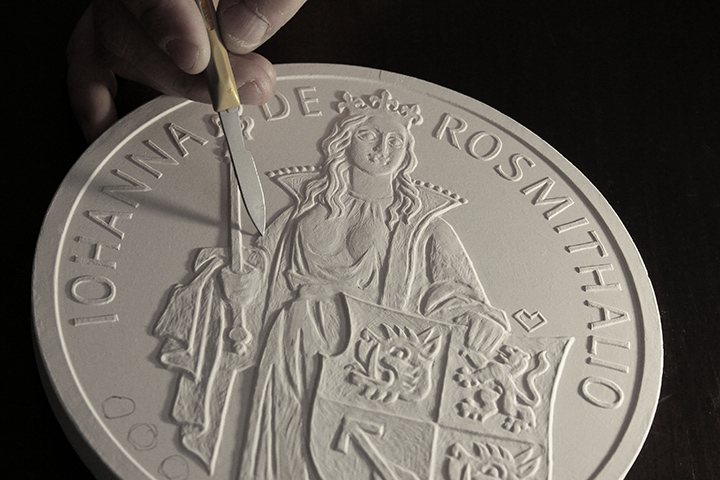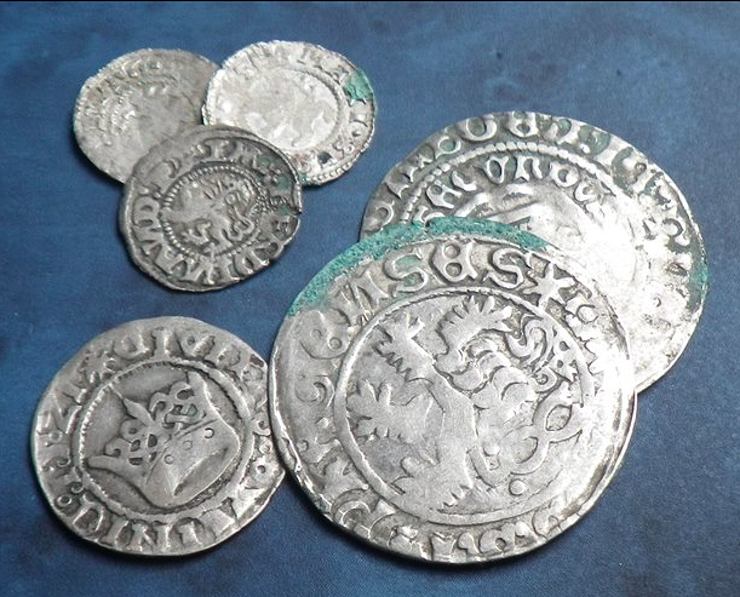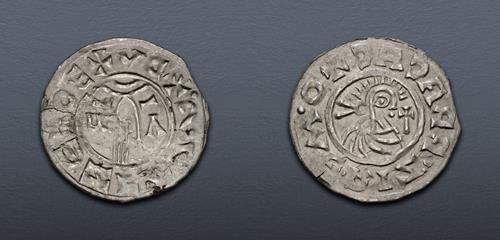Recommended News On Hand Polishing Czechoslovakia Coins
Wiki Article
Why Is A Gold Coin Or Medal 3d Modelled From A Cast?
Scanning a maquette to scan gold coins and medals requires the use of specialized equipment. It is able to capture all dimensions of the model, its details, as well as physical aspects of the model. This digital copy is used for a variety of reasons during the production.
3D Scanning Technology- High-resolution 3D scanners can be used to record the physical dimensions and details of the model. They employ a variety of methods to record precise measurements.
Capturing surface information- The scanner emits light beams, or lasers on the model. The scanner captures the distortions and reflections these beams cause, capturing surface information.
Data Collection - As the scanner is moved across the model, it gathers an immense amount of data, resulting in a digital version of the model's geometry contours and particulars.
Conversion to 3D Model - The data points that are collected are processed by a software which reconstructs them into a 3D digital model. The model is able to recreate the dimensions and physical attributes of the plaster model.
Why do we need to create a Digital 3D Model
Precision and Replication Digital 3D models enable precise reproduction of the model's features and dimensions. This is vital to ensure that gold medals or coins match the original model.
Digital models permit easy modification or improvement. Designers can modify the 3D model without altering the original plaster maquette. This allows for repeated corrections or improvements.
Compatibility with Manufacturing Processes Compatibility With Manufacturing Processes Digital 3D Models are compatible with various manufacturing processes, such as 3D printing or CNC machining, which facilitates the manufacturing of dies and molds to make mass production.
Digital 3D model archives and documentation- Digital models are archived as records of design. They can be digitally stored for future reference, reproduction or for historical documentation.
By scanning plaster models and creating 3D digital model designers and manufacturers can streamline their production processes to ensure precision of replication and make use of advanced manufacturing technologies to make gold coins and gold medals with a high degree of precision and fidelity. View the top Scanning and 3D Modeling Prague Mint gold medals blog recommendations. including gold bullion bars, mexican gold coins, coin gold silver, 2000 p sacagawea dollar, guardian angel coin, 5 dollar gold coin, 100 gm gold biscuit, 1 10 oz gold coin, gold piece price, oz gold bars and more.

What Is The Reason That Dies Used To Strike Gold Coins Or Medals Undergo The Process Of Hardening By Vacuum?
To make dies harder for gold coins or medals, they are subjected to controlled temperatures inside a vacuum oven. This is a brief description of the process for forming a vacuum.
It is vital that the dies used to strike medals and coins are completely clean, free of contamination and residues.
Loading in Vacuum Furnace
The dies are put into a vacuum-environment chamber.
Evacuation from Air
The vacuum furnace removes the air inside the chamber to create an uncontrolled vacuum, free of oxygen and other gases. This ensures uniform heating and prevents oxidation.
Heating Phase
The furnace is heated up to the desired temperature required for hardening the dies. The range of temperatures will be determined by the material type and the process of hardening.
Bathing in high temperatures
The dies are held at an elevated temperature for a specified time, allowing the material to achieve and retain the desired hardness as well as the metallurgical structure.
Quenching or Cooling
After the soaking process, dies have to be cooled quickly using specialized techniques. The rapid cooling helps the metal achieve the required hardness.
Tempering (Optional).
In some cases it is possible to temper after hardening. Tempering involves reheating the dies at a lower temperature in order to alleviate internal stress and increase the toughness of the die while maintaining its their hardness.
Quality Control and Inspection
Hardened dies must pass thorough quality control and inspections to ensure they achieve the desired toughness, hardness, or tolerances.
Post-Treatment Handling-
Die dies are then processed further like polishing or coating, before being used for strike of the coin or medal.
The process of hardening by vacuum increases the strength, wear resistance, and lifespan of the dies used for striking gold medals or coins. This process, which creates an environment that is free of airborne contaminants, ensures that dies are consistently hardened and consistently, enhancing the overall quality and durability of the products. Have a look at the recommended vacuum hardening Prague Mint gold coins blog recommendations including purchase gold coins, gold and silver bullion, 10oz gold bars, gold & silver bullion, gold bullion coins, congressional gold medal, gold and coin near me, gold bullion bar price, gold krugerrand, american buffalo coin and more.

What Are The Benefits Of Sandblasting Certain Kinds Of Textures Or Finishes, Like Matte Surfaces Or Textured Ones?
This method can be used to achieving specific textures or finishes, such as matte, textured, or patterned surfaces, on coins or medals. This technique is utilized to achieve a number of different reasons.
Surface preparation- The coin or medal is placed in the form of a cabinet or chamber with a nozzle connected to an air compressor. The chamber is typically covered to protect the abrasive material that is used during the process.
Abrasive Material Selection - Fine particles of abrasive materials, such as sand, silicon carbide, glass beads or aluminum oxide are propelled onto the surface of the medal or coin at high speed.
High-Pressure System - The abrasive powders are propelled on the surface by compressed air, or by other high-pressure systems. The force and speed at which the particles hit the surface produce the desired texture or finish.
Texture Creation - The impact of abrasive powders on the surface alters the topography, creating an appearance that is matte or textured. This method is used to selectively roughen some regions or create an even texture across the whole surface.
Controlled application- Sandblasting is controlled by intensity, duration and the angle of application. This allows for different textures and finishes. Different abrasives, pressure levels and abrasives produce different results.
The reasons for sandblasting
Texture variation- Sandblasting can produce a variety of different textures and finishes such as smooth, grainy, frosted or smooth surfaces. This adds visual appeal to medals or coins.
Aesthetic Enhancement - Sandblasting alters the appearance of the surface, reducing light reflection and reducing shine, which may enhance the medal's or coin's visual appeal. Matte finishes in particular, draw attention to particular design elements since they reduce the glare.
Anti-glare Property - Sandblasting creates smooth or matte surfaces that minimize reflections, glare and make the coin or medal more attractive.
Contrasting Design Elements. Sandblasting produces contrast between polished and the textured areas on the coin. It can be used to emphasize specific design elements or create visual depth.
Sandblasting can be personalized to create unique designs or textures.
Sandblasting is an ingenuous method that can be applied on gold coins in order to create different surface textures. It also enhances the overall look of the medals. Take a look at the best sandblasting Czechoslovakia gold coins blog examples. including five dollar gold coin, 2000 p gold dollar, olympic gold medal, 1972 gold dollar, cheerios sacagawea dollar, gold & silver bullion, gold buffalo, cost of silver coin, 1 10 oz american gold eagle, gold pieces for sale and more.

How And Why Are Limited Edition Or Collectible Gold Coins Numbered Individually?
Limited edition or collectible gold coins are often uniquely numbered to serve a variety of purposes principally to verify authenticity, guarantee exclusivity, and increase their appeal to collectors. What exactly is this procedure carried out?
Sequential Numbering - Each coin of a limited edition series or collectible comes with an unique serial number. This number is usually written or engraved on the edge or surface of the coin. The number indicates the place which coin belongs to the series.
Certificate of Authenticity - The coin might be issued a certificate of authenticity that matches the coin's unique number. This certifies the authenticity of the coin, and provides specific information on the series, metal content, as well as minting information.
Why do we have to count the number of coins individually?
Authenticity Assurance – The numbering of each coin within the series is a visible and verifiable method to verify its authenticity. Each number functions as a unique identifier, ensuring that the coin is genuine and is part of the official collection.
Exclusion and rarity Coins with limited issue numbers specific numbers are regarded as being more expensive and scarce. The small number of available coins makes them more sought-after and desirable.
Coins with numbers create a collector's appeal, allowing collectors to track and display specific numbers within a series. The numbers with the most significant or lower values within the sequence can be considered more valuable.
Individual Numbering is a way to encourage the involvement of collectors and increases their enthusiasm for building collections or purchasing certain numbers. Collectors can seek out specific numbers based on their own preferences or important milestones.
Value and Resale Potential- Coins with unique numbers may have a higher value on the market for secondary sales, particularly if they have lower serial numbers or belong to an extremely sought-after series. Collectors usually consider these coins valuable due to their rarity and exclusivity.
Provenance, Trackability, and DocumentationNumbering is used to make it easier to track and document for each coin’s history. This aids in proving the provenance of a coin on the market for collectibles.
Through the individual numbering of limited edition or collectible gold coins mints or issuers ensure authenticity, establish exclusivity, and enhance the coins' appeal to collectors seeking unique, rare or valuable pieces in the series. Numismatics typically attach particular importance and importance to these numbered gold coins. View the top rated Czechoslovakia gold coin numbering site examples including buy gold coins near me, buy gold bars from bank, 1 4 ounce gold coin, bullion dealers, gold bars price, gold and silver bullion, gold krugerrand, gold silver coins, 5 dollar gold coin, gold coin price today and more.
